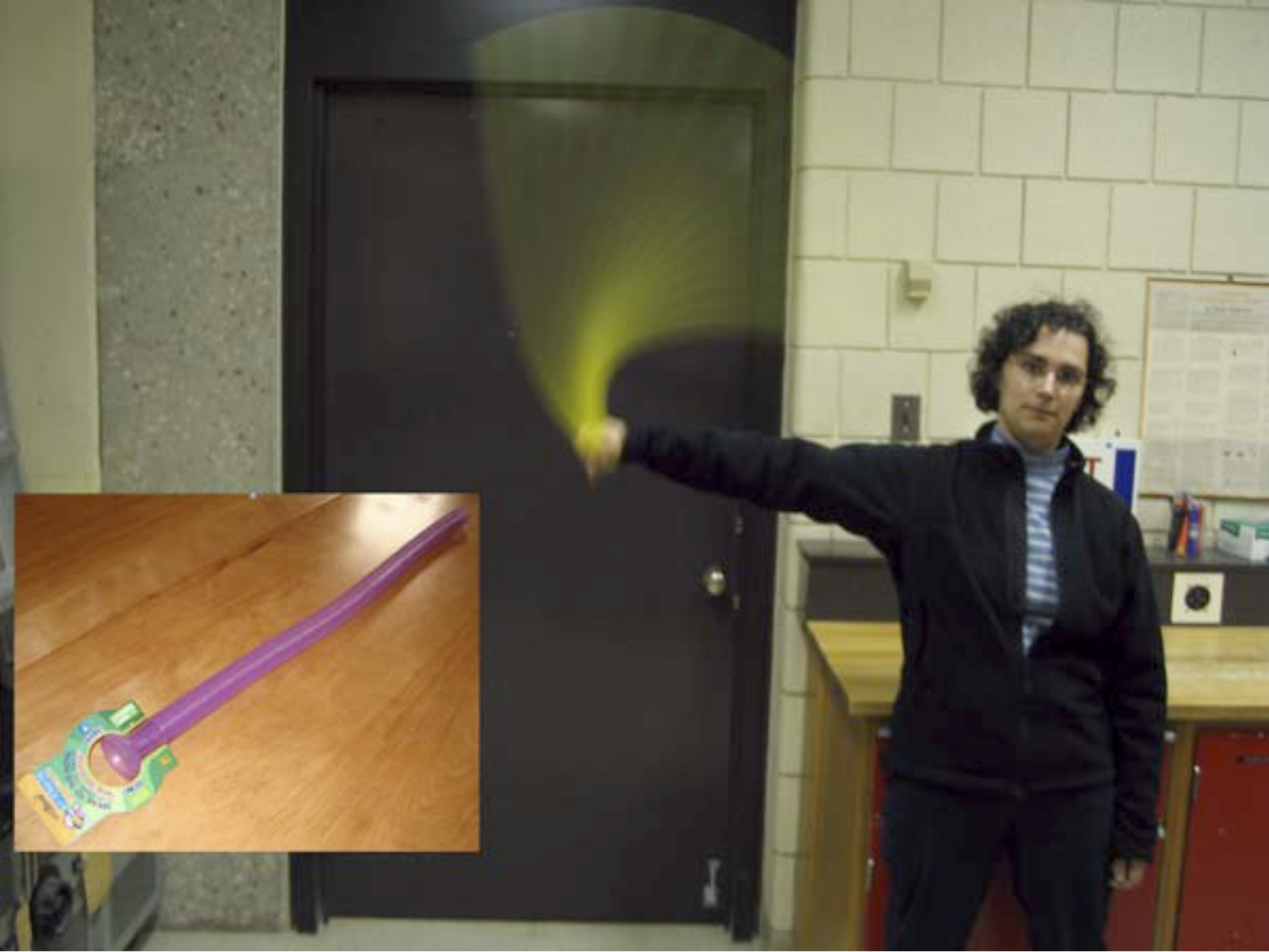Sound Tube: A Versatile and Inexpensive Physics Demonstration
April 01, 2006 Filed in:
Demo CornerDebbie Chaves and Bruno Tomberli, Physics Department, University of Guelph, Guelph, Ontario, N1G 2W1
A versatile and inexpensive demonstration tool for every physics teacher is the “sound tube,” also known as the whirly, Hummer and corrugahorn. Its puzzling properties span many different physics topics.
What is a sound tube? The sound tube is a plastic corrugated plastic tube that is about 75 cm long and 3.5 cm in diameter. The most amazing property of the sound tube is its ability to “sing.” By holding one end of the tube and swinging the other end around in a circle, you will hear a loud clear sound. As it is twirled faster, different frequencies are heard. The toy’s packaging indicates that five frequencies are possible although this seems to be from only the most skilled “twirlers,” as we could produce only four.
 Figure 1: One of the authors demonstrating use of sound tube. Inset: Close-up of sound tube.
Figure 1: One of the authors demonstrating use of sound tube. Inset: Close-up of sound tube.
How do you investigate the sound tube? You can ask students to play with the tube and determine some physical principles associated with it. You could even ask them to take it home for continued experiments, but this might require a sound tube for each student. Our investigations determined the following properties.
- If you close either the stationary or the twirled end of the tube there is no sound produced. To produce singing, the tube must be open at both ends.
- A smooth tube of similar length and diameter does not sing when twirled.
- The frequency of the lowest resonance does not correspond to a smooth open tube’s fundamental frequency. In fact, the sound tube’s fundamental is closer to the second harmonic of a smooth tube.
- As the spin rate of the tube is increased, there are sudden upward jumps in the frequency as the spin rate is increased. Intermediate frequencies are not heard.
- Driving a car with the sound tube out the window will produce no sound if the tube is held perpendicular to the airflow, but will produce sounds if the tube is held parallel to the wind. Therefore, airflow is necessary for the singing sound but it is not produced by Bernoulli's effect. Frequency jumps are produced at the same driving speed as the tangential component of the velocity of the twirled end (Crawford, 1974).
Why does the sound tube sing? The singing is caused by turbulent air driven over the tube’s crenulations by centrifugal pumping. The speed of the air flow through the tube is equal to the tangential component of the velocity of the spinning end (Crawford 1974). Laminar (low speed) flow produces no sound. The amplification of only particular frequencies is associated with the standing wave resonance produced by the tube open at both ends.
Where can you use this demonstration in the curriculum? Obvious places would be waves and sound. However, the sound tube demonstration can be used for topics such as centrifugal force, Bernoulli’s principle, turbulence and Reynolds’ number. The quantized sound tube frequencies also make for interesting demonstrations in quantum mechanics (Griffiths and Steinke, 2001). What more could you ask for $2.99?
References
Crawford, F.S. (1974) Singing Corrugated Pipes. Am. J. Phys. 42:278-288
Griffiths, D.J. and Steinke, C.A. (2001) Waves in locally periodic media. Am. J. Phys. 69(2):137-154

Column Editor: Ernie McFarland, Physics Department, University of Guelph, Guelph, Ontario, N1G 2W1 Tags: Waves and Sound


